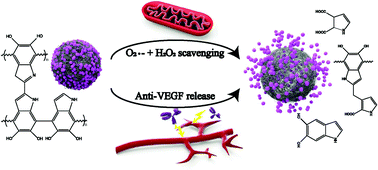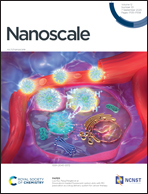Controlled release of anti-VEGF by redox-responsive polydopamine nanoparticles
Abstract
Reactive oxidative species (ROS) are the primary mediator of angiogenesis by upregulating the expression of vascular endothelial growth factor (VEGF) in the development of wet age-related macular degeneration (AMD). However, the current treatment of AMD currently relies on monthly intravitreal injection of anti-angiogenic therapeutics to inhibit new choroidal angiogenesis. However, repeated injections have been associated with side-effects, are costly, and may lower patient compliance. Moreover, the intraocular oxidative stress-dependent angiogenesis is not alleviated by current treatments, which limits the overall efficacy of the treatment strategy. Recently, nanoparticle-based devices present potential in sustained delivery of angiogenesis inhibitors and excellent capability of scavenging reactive oxygen species (ROS). Nevertheless, limited efforts have been dedicated to the treatment of oxidative stress-related diseases via a combined anti-angiogenesis and anti-oxidization pathway. For this purpose, we developed anti-angiogenetic protein-loaded polydopamine (PDA) nanoparticles for the enhanced treatment of AMD. Remarkably, the PDA nanoparticles could efficiently scavenge ROS to reduce the expression of angiogenic agents. In parallel, the particles were able to controllably release loaded anti-angiogenic drugs in response to oxidative stress.



 Please wait while we load your content...
Please wait while we load your content...